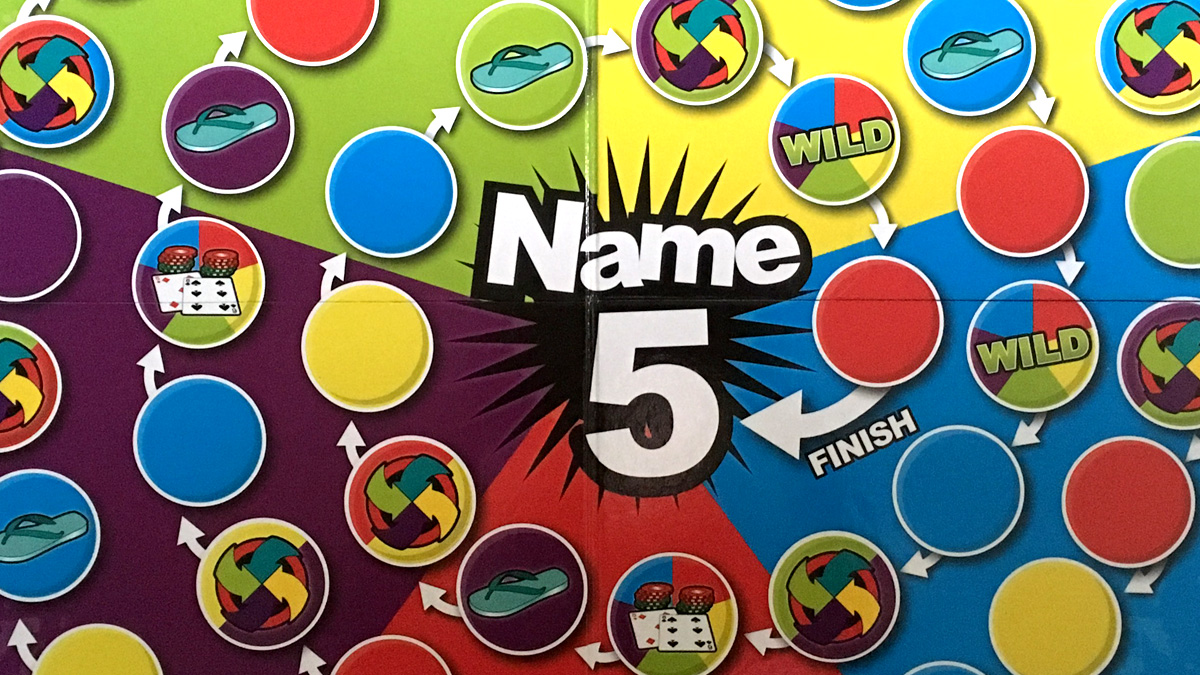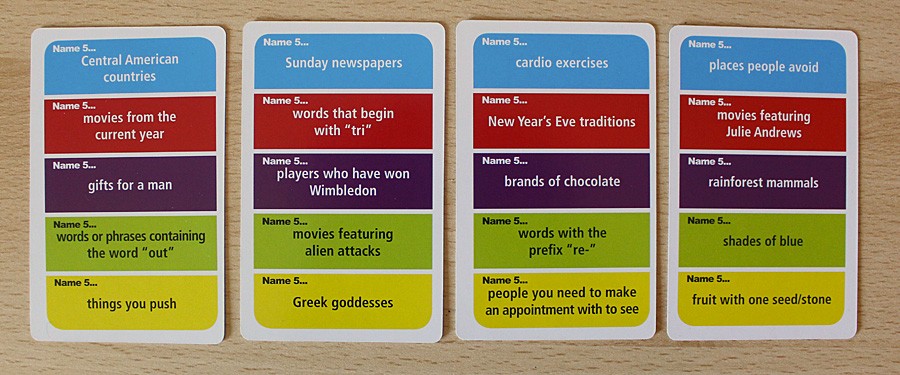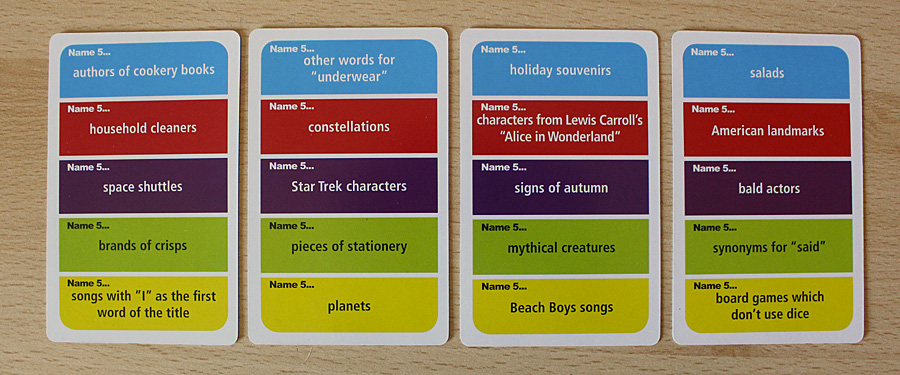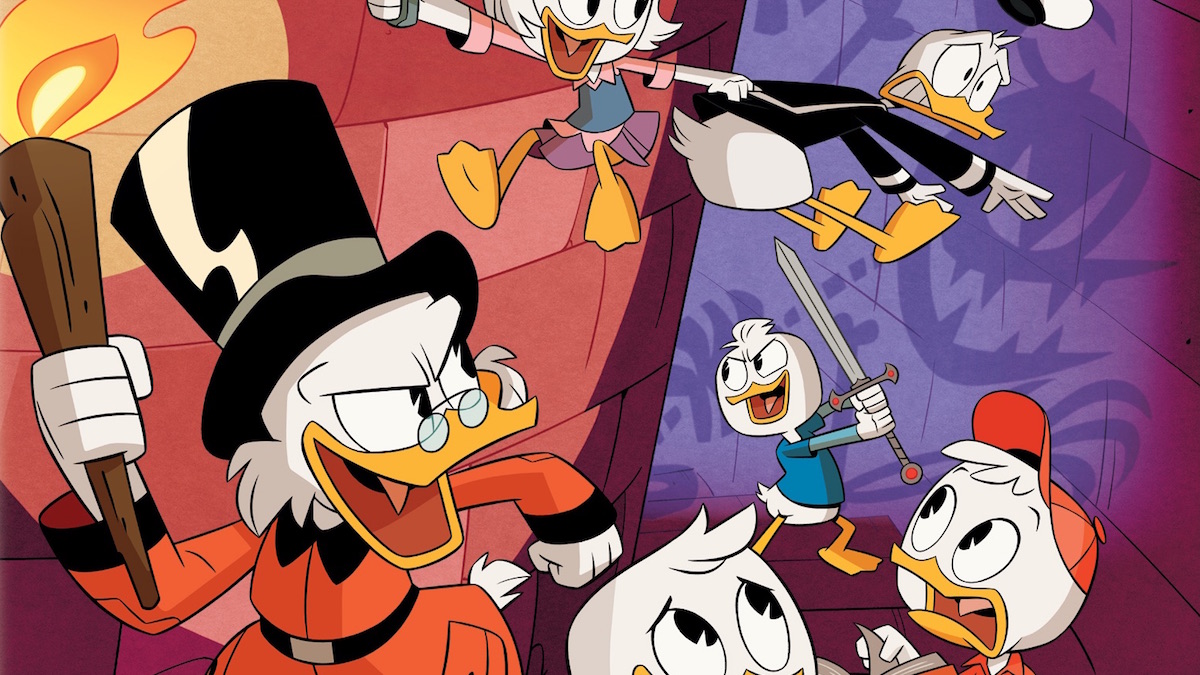
What is Name 5?
Name 5 is a simple, family party game from The Green Board Game Co. Players are given a category and have to name five things that fit into it. It sounds simple but is harder than you think once you start playing.
Components
- 288 Playing Cards
- 1 Board
- 1 Die
- 1 Sand Timer
- 4 Pawns
- 1 Rules Sheet

How Do You Play Name 5?
Setup
Name 5 is primarily designed as a team game, however, it can be played individually if desired. Players separate into two teams (an additional two pawns are included for individual games but you could play as four teams easily) and place their pawns onto the start space. The cards are divided into piles and placed equally in front of each player or team. The team with the youngest player goes first.
Gameplay
Teams take it in turns to roll the dice and move that many spaces. A player from an opposing team then takes the top card from their pile and reads out the category which corresponds to the colored space the active team’s pawn just landed on. Once the category has been read out, the sand timer is turned and the active team has 30 seconds to name five things which fall into that category. If they succeed the team takes another turn (up to a maximum of three), but if they fail, play passes to the next team.
In addition to the plain colored spaces on the board, there are four other special spaces which have different rules.
All Play: The All Play spaces have two colors below the symbol. If you land on an All Play card, you get to choose which color category to play without looking at the card, and the opposing team plays the other. One player from each team reads the category, and when both are ready, they announce it to the rest of their team. The first team to name five items for their category wins and gets to take the next go but if neither team can complete it, the round is repeated with a new card.
Flip Flop: The Flip Flop spaces force teams to take it in turns to name items from the category. Teams get 10 seconds to name something that fits, then play switches to the next team and so on, until one team fails to answer. The last team able to provide a correct answer wins the round.

Wild: If your team lands on a Wild space, an opposing team or player reads out all five categories on the card and then they choose which category your team answers. If your team correctly names five items for that challenge, you get to play again even if this was your third turn in a row.
Double Down: On a Double Down space, you get to read all five categories on your card and select two of them. If you can name five items for both categories in 30 seconds, you get to roll again and move double the number of spaces, otherwise, play passes to the next team or player.

Winning
In order to win Name 5, a team needs to land on the finish area by exact count. Once there, your team has 90 seconds to complete all five categories on the card. If you manage it, you win, otherwise, play passes to the next team. On your next turn, you have 90 seconds to complete four categories, then 60 seconds to complete three categories, then 30 to complete two, and finally, 30 seconds to complete one challenge – assuming the opposing team hasn’t usurped you by then.
Why Should You Play Name 5?
We both liked and loathed Name 5, so let’s start with the positives. We loved the concept of the game. Naming five things that fit a category sounds really simple, but when you’re put on the spot it’s much trickier than you think. The categories are a completely mixed bag of subjects too which makes it great for families because while kids are unlikely to be able to name five Elvis movies or “types of insurance”, they’ll probably be much better at naming five school supplies and vital for helping grandma name five “Taylor Swift songs”.

Some of the categories are very specific, such as “Beatles albums” or “actors who have appeared in Doctor Who“, while others are very vague indeed such as “things to do when you can’t sleep”, which could theoretically be anything. For vague questions like these, it’s up to the teams to decide what qualifies as an acceptable answer, and of course, this could easily lead to quarrels depending on who you’re playing with, so beware if you’re planning to play with family members known for picking holes in answers.
What we didn’t like about Name 5 was the gameplay itself. My family isn’t big on games with timers anyway, but we soon found the roll-and-move method boring, particularly at the end of the game. Instead, we ended up completely changing the game to suit our playing style. We pretty much ditched the board entirely and converted Name 5 into an Apples to Apples/Cards Against Humanity style card game where one person would simply take the top card and read a category out to the current player who would then try to name five items for it. If successful, they got to keep the card, and whoever had the most cards when we decided the game was over was declared the winner.

This variation also allowed my eight-year-old to join in during individual play despite the minimum age recommendation being ten years because I was able to select a card and a category that I felt he had a good chance of answering. Of course, this method does have the drawback that you’re always allowing another player to select your category (unless you implement a rule where you get to say a color without seeing the card) which leaves you at their mercy when it comes to deciding how difficult they want to make it for you. But if you’re playing with a group of fair-minded players this can work to everyone’s advantage because players can select tougher questions for more knowledgeable players and easier ones for younger ones. Removing the board entirely also makes the game much more portable as I could simply pop a stack of the cards into a deck box and take it out with us for car trips or on public transport. It’s already on my list of games to bring on a very long train ride later this year
Name 5 is a good little party game that, with a little tweaking, can be become great. Although it’s far too easy to be thinking about this yet, I would highly recommend it for Christmas parties and family get-togethers when you need something that everyone can play together before an elderly relative suggests Candyland…
GeekMom received this game for review purposes.

